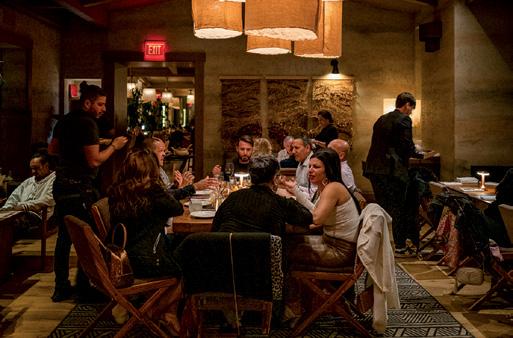
2 minute read
Key Manufacturers Expand in Free Zones
Medtronic. Eaton. Timberland. Fruit of the Loom. Baxter. Rockwell Automation. The list of manufacturers in the Dominican Republic’s 70-plus “free-zones” reads like a who’s who of global brands, and many are expanding now to provide “nearshoring” for buyers in the Americas.
Consider Medtronic, the world’s largest medical device maker. The Minneapolis-based company reported revenues topping $31 billion worldwide in 2022. Medtronic started in the San Isidro Free Zone in 1998 to produce sutures. Today, it employs some 4,300 people at four Dominican plants –roughly half of them, women – making varied items. Its total investment in those plants: more than $160 million, with $46 million for the latest one that opened in 2018.
“We chose the Dominican Republic for two important factors: a highly skilled workforce … and the political-economic stability of the country,” country manager Manuela Uribe told a recent investment conference in Santo Domingo.
Eaton, the American-Irish electric equipment maker with sales topping $20 billion worldwide, has been operating in Dominican free zones since the 1980s and now employs more than 5,000 people in those plants. In 2022, Eaton opened an industry design and development center near its plants and the Technological Institute of Santo Domingo, aiming to serve Eaton customers across the Americas. The company has partnerships and internship programs with the Tech Institute and other local schools.
“We’re proud to be the first electrical manufacturer in the Dominican Republic with a dedicated hub for design innovation,” said Eaton’s engineering manager Luis Valeiron. The design center supports product development for Eaton’s key products lines, including industrial control equipment.
From Florida's Tampa Bay area, Oscor, a maker of medical diagnostic devices, is investing $10 million, aiming to boost employment at its Dominican plants to reach 1,500 people in 2024. l can Republic to produce some of its own fabric locally. It also dyes, cuts, and sews cloth to make garments, employing thousands of workers. Today, its fabric mill runs partly on biomass, such as coconut shells and wood remnants, reducing the need for fuel imports, says Jerry Cook, vice president of government and trade relations for the North Carolina-based apparel powerhouse which has global sales topping $7 billion a year.

“The Dominican Republic has done so many things right,” Cook says. “They’ve built out apparel and textiles as they developed other industries [rather than] phase out apparel as some countries have. And they’ve been very purposeful to work with industry to provide what we need, administration after administration… There’s an idea of growth for the long-term, built on government, business, and people as partner. And everyone is focused on the future.”
That evolution is clear at Zona Franca de las Americas, located near Santo Domingo’s international airport and the sprawling DP World Caucedo seaport. Las Americas launched in 1986 and initially produced mostly clothes and shoes for export. It now hosts 35 factories employing 21,000 workers, with many companies making medical supplies such as dialysis and intravenous kits. The Dominican Republic produces so many medical goods that it’s now set up a facility to sterilize those items locally. “We no longer need to send those medical devices overseas for sterilization, saving time and money,” says Las Americas Free Zone project manager Luis Manuel Pellerano.
Bela G. Szabo, the new CEO at Las Americas Free Zone, sees future opportunities in attracting both more suppliers of current manufacturers and expanding into new industries, especially in automotive parts like Mexico has. At least one Japanese auto supplier is now considering the Dominican Republic to make auto parts for U.S. sale, government officials said after a recent trip to Japan and South Korea that promoted nearshoring. The Las Americas Free Zone also is diversifying revenues by welcoming more tenants that










